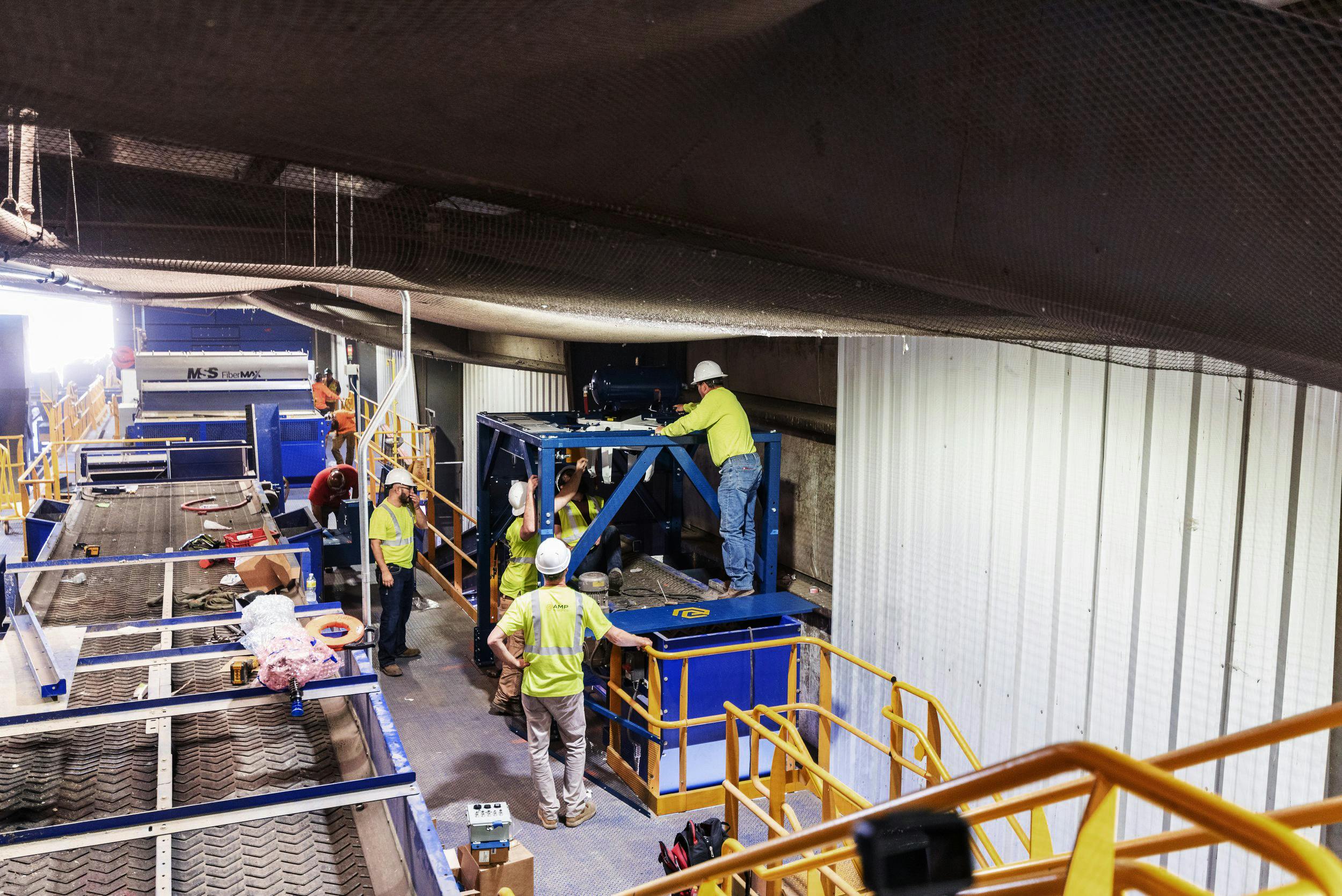Loading...

Caglia EnvironmentalCaglia
Caglia Environmental
3
Day Install
Fresno, CA
The Caglia family's deep roots in Fresno and the San Joaquin Valley span nearly a century. Their Cedar Avenue Recycling and Transfer Station (CARTS), established in 2004, epitomizes cutting-edge materials recovery facilities. CARTS processes a variety of materials, diverting significant waste from landfills. Fresno's primary waste handler, it recycles over 70% of collected materials, contributing to the city's national recycling leadership.
Challenges: Staffing, Keeping Pace with Technology Advancements and Market Opportunities
According to Mike Ledieff, division manager for CARTS, labor shortages regularly impact staffing for critical positions in the facility. “The more hands we have, the higher our diversion rate.” Simply not having enough people impedes recovery and landfill diversion goals.
Furthermore, to keep the region it serves on the leading edge of recycling, the Caglia family recognizes the importance of continuing to invest in the business. “My family’s been around for so long because we like to stay on top of technology,” said Rich Caglia, owner of Caglia Environmental.
That perspective on investment in technology and innovation led CARTS to go operational with two new disc screens, four optical sorters, an auger screen, and an eddy current, which allowed the facility to process between 25 and 35 tons per hour, up from 10 to 12 tons per hour.
Ledieff said the success of the first wave of technology upgrades made him eager to keep exploring other ways to improve efficiency and keep the MRF on the cutting edge. That’s when one of CARTS’ commodity buyers made him aware of The Recycling Partnership’s Polypropylene Recycling Coalition, which offers grant funding to MRFs of all sizes for equipment to improve the sortation of polypropylene.
Polypropylene has historically been difficult to recover given the array of form factors it comes in, but it’s one of the biggest revenue opportunities for MRFs today. The market for recycled polypropylene has been growing fast, driven by consumer demand, producer commitments, and government policy—and CARTS wanted to capitalize on this opportunity.
“The AMP team came out, and we had [the robots] in within three days. The time frame, AMP’s flexibility to come out on a weekend, and complete an install so it didn’t impact our production—I love working with AMP.”
Solution:
Grant Funding Initiates AI-Driven Polypropylene Recovery
Ledieff and his team pursued the grant opportunity through The Recycling Partnership, and CARTS was ultimately awarded funding. CARTS chose AMP Robotics as its technology partner after several facility visits and working with the team.
The Recycling Partnership provided funding for one robotic arm, but CARTS decided to purchase two additional robots from AMP after seeing how AI and robotics technology could improve recovery of additional plastics and other recyclables. Along with the grant-funded PP-focused single arm, the MRF also has a tandem robot on its last-chance line picking high-density polyethylene (HDPE) natural, HDPE color, PET, and film. The facility installed another robot on the aluminum can line for quality control.
“The AMP team came out, and we had them in within three days,” said Ledieff. “The time frame, AMP’s flexibility to come out on a weekend, and complete an install so it didn’t impact our production—I love working with AMP.”
Results:
Robots Supplement, Bolster Existing Workforce
Even though CARTS has reduced its labor force somewhat thanks to the deployment of this technology, the robots were never meant to replace human labor, but rather to fill gaps and hard-to-hire-for positions. Placing a robot on the last-chance line eliminated the staffing issue in that part of the MRF. And following the robots’ installation, CARTS was able to reallocate manual sorters from quality control to other areas of the operation. “The robots impact our business today by supplementing the labor we have on our line, so we can get more commodities out of the material stream,” noted Caglia. Ledieff added, “The robots can distinguish between polypropylene, a UBC, HDPE, and more—you don’t have to train them, so it increases our throughput and bandwidth in other parts of the facility.”
Robots can be superior to humans in quality controlling polypropylene given how many form factors the material comes in. It’s a challenging task for a human, and can be a full-time job, which is problematic in a tight labor market. AMP’s neural network recognizes 50 billion objects on an annual basis—a number that continues to exponentially increase as its install base expands. AMP’s vision technology counts more than 4.5 million discrete polypropylene materials daily. Plus, the AI platform is constantly learning and improving its ability to recognize and sort different objects made of polypropylene, along with a wide variety of other recyclables.
Results:
Marketing Polypropylene and Adding to Bottom Line
With CARTS’ focus on polypropylene recovery, having a robot dedicated to capture the material is crucial. The MRF is now producing cleaner, more valuable polypropylene bales, instead of a mixed bale of #3-#7 plastics. “The robot is functioning very well, and it's keeping the material out of the landfill. Polypropylene is now a marketable product for us,” said Keith Hester, Caglia Environmental general manager.
AMP’s systems often deliver purity upwards of 98%. Plus, robots can target multiple material types simultaneously. Their flexibility and precision have been selling points for grant awardees and others targeting a plastic with a strengthening end market like polypropylene. Ledieff calls the polypropylene-focused robot “the best success story” and encourages other MRFs to learn more about the polypropylene market and funding opportunities.
Looking Ahead:
AI and Robotics Stand Out in Sorting’s Future
AI-powered robots are among the technology upgrades helping CARTS stay ahead of industry and regulatory standards. Ledieff predicts AI and robotics will play a big role in the future of sorting—and he’d like to add more to the facility.
“The technology is only going to get better, and it’s pretty great as it is right now. I know there are partnerships and hybrids of different types of technologies coming out, and I’m looking forward to seeing what the industry brings and what else we can implement within our facility that can help us increase diversion and decrease landfilling.”




